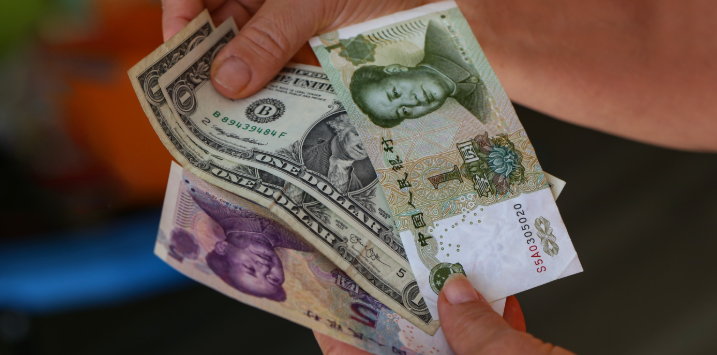
China deflates – persistent price drops signal economic strain
The latest data out of China reveals the country is sliding deeper into deflation. In May 2025, consumer prices fell 0.1 per cent year-on-year, the fourth consecutive monthly decline, while producer prices plunged 3.3 per cent – the steepest drop since mid-2023.
Economies tend to cope with isolated price drops because they tend to be manageable, but persistent deflation hints at a broader and more systemic imbalance in an economy, in this case, China’s.
The two main gauges of inflation – China’s Consumer Price Index (CPI) and Producer Price Index (PPI) – have revealed a worrying picture of a structural low-growth trap. Consumer prices have barely budged for over a year, and the May PPI data suggests industrial deflation is accelerating. Core CPI, which strips out food and energy, edged up to 0.6 per cent in May. While that’s modestly encouraging, last month it wasn’t enough to reverse the drift into disinflation.
The demand and supply picture paints a landscape where private demand deficiencies are bumping into state-driven supply, which in turn are both structural and cyclical.
On the demand side, Chinese households have long operated under constrained conditions. Wages are suppressed in the absence of independent unions, the yuan is kept weak to prioritise exports over purchasing power, and the tax system leans heavily on consumption rather than income. Together, these factors depress consumer spending, which remains a much smaller share of Gross Domestic Product (GDP) compared to developed economies.
And don’t forget just how much of China’s past growth has been dominated by fixed investment spending. Remember all those ghost cities that were built and remained empty for more than a decade? That wave of construction is what produced China’s double-digit GDP numbers. As an aside, today, some of those cities remain largely vacant but others have become vibrant urban areas.
Nevertheless, the widespread practice in China of purchasing additional homes, widely considered safe investments in a country of 1.4 billion meant that an estimated 70 per cent of household wealth is tied up in real estate.
When the market froze around 2020, and China’s yearslong speculative property bubble began to deflate under regulatory crackdowns, it left tens of millions of homes unoccupied and millions more unfinished. The loss of wealth has contributed to an economic slowdown.
On the supply side, state-led industrial policy continues to generate overcapacity. Chinese provinces compete to build local ‘champions’ in solar and electric vehicles, leading to saturated markets and plunging prices, because as domestic demand falters, producers slash prices to clear inventory, creating a vicious deflationary loop.
And now, China attempts to dump excess goods overseas have been frustrated by rising trade barriers – particularly the U.S. tariffs under Trump’s administration.
Recent deflationary pressures in China have been amplified by falling commodity prices and renewed trade tensions have amplified recent deflationary pressures in China. But the real concern is not cyclical softness – it’s the risk of a Japan-style stagnation.
While inflation reduces the burden of a debt–money borrowed in old dollars – deflation raises the real burden of debt, dissuades consumption, and erodes corporate profit margins and short-term fixes are of course stymied by high household leverage and a real estate sector still struggling.
More importantly for investors, the deflation spiral could also have geopolitical consequences. With weak domestic demand, China’s export surplus is likely to grow, exacerbating global imbalances and fuelling calls for protectionism from the U.S., EU, and regional neighbours.
As I have noted previously, dictators only have two levers they can pull to support their legitimacy. The first is economic prosperity, and in the absence of that, the second is nationalism. Nothing inspires nationalism like a foreign common enemy and the call to arms.
Can China reflate?
The People’s Bank of China (PBOC) cut interest rates and reserve requirements again in May, but with limited traction. Households are deleveraging, not spending.
Fiscal support has been more visible, including a record issuance of RMB (Chinese Yaun) 3 trillion (US$411 billion) in special bonds. Yet even this falls short of what’s needed to catalyse meaningful domestic demand growth. Keep in mind, China has long been challenged when trying to switch to a consumer-led economy.
Meanwhile, the structural reforms with the greatest potential – such as income redistribution, labour liberalisation, and revaluing the yuan – are politically unpalatable. Beijing remains focused on maintaining control and preserving the export machine, even at the cost of long-term domestic disharmony.
And then there’s the ageing population and declining workforce, a pattern that puts China hot on the heels of Japan, a country that experienced decades of low returns.
China’s deflation is not just a domestic issue. If the country exports disinflation to the rest of the world, it will pressure global supply chains and heighten trade frictions. China’s internal problems are yet another set of data points investors need to be mindful of.
If deflation grips China more tightly, it will be because the deep imbalances can’t be solved with a few interest rate cuts or headline-grabbing but increasingly impotent stimulus packages. Without a material shift in economic priorities – toward genuine household and consumer support, and away from centrally planned industrial dominance – deflation may become embedded. That in turn could produce a prolonged period of sub-par growth and rising external tensions and that could ripple through global equity markets, bond yields, and trade flows for years to come.
A very informative article. A false economy can only be sustained for so long. This article highlights the significant divide between capitalism and communism. They don’t pair well.
Thank you for your comments, Alex.